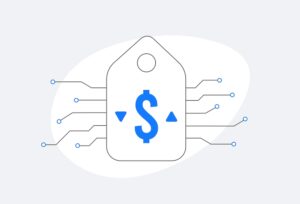Getting input from sales, building the right model and properly scoring a prospect’s engagement are all essential to creating a winning B2B lead scoring, nurturing and qualification strategy.
“You need to work hand-in-hand with your sales team,” says Meagen Eisenberg vice president of demand generation, DocuSign. “Sales will use lead scoring if they have a hand in developing it with you, but the implementation will fail if you haven’t gotten their buy in from the get go.”
Making sure sales has the proper training to use your lead scoring system effectively is critical, notes Eisenberg, who will be speaking at B2B LeadsCon, Aug 14-15 in New York. “You can’t just throw it over the fence at them—every new sales period, get their feedback and show them what worked and what changes you’re making to course correct. Let them see that there is a correlation to how the [lead scoring process] can be turned in revenue and sales success.”
One of the biggest challenges for many marketers is simply sitting down and building the initial model out to begin the process. You need to look at the existing data you are collecting and put a score to it.
“Think about what fields and data you need to capture to optimize for selling and conversions,” she says. “Once you put a stake in the ground and create your initial model, you can get over your scoring ‘writer’s block’.”
Creating a lead scoring model with just one number or indicator isn’t necessarily the best way to go, Eisenberg cautions. When she first joined DocuSign, the company had an older system in place with only a first gen score combining firmographic and engagement into one number. Today, the company works with Eloqua to create scores reflecting not only firmographics but the prospect’s engagement with the company, within their email communications, website and products, delivering an alphabetic and numeric score
“It’s really helpful to be able to harness that information, as our goal goes beyond targeting to truly engage our prospects,” she says, noting that DocuSign averages about 80,000 leads delivered to the 15 person inside sales team on a quarterly basis. “We need to help the team prioritize to be effective.”
Eisenberg’s team meets with sales management for about 30 minutes each week to discuss the status of leads in the system, identify what’s working and address opportunities for improvement.
“There’s multiple people evaluating solutions in every company today, from IT to the business owner to procurement, so account-based scoring is important as well. We run analysis every quarter and look at open opportunities on each account,” she says, where the account score is based on engagement levels across all individuals at a company. “It gives us a competitive advantage if our sales reps can focus on the accounts with the highest engagement scores.”
Looking at engagement gives sales reps a better picture of how close an account may be to closing, she says, and can improve the entire lead generation process. A prospect might score high on firmographics, but if they haven’t actively opted-in for your business to reach out to them, they aren’t as good a prospect as someone who has raised their hand and is engaged.
For DocuSign, an electronic signature transaction management/document workflow automation service, aggregating scores and doing account based scoring based on things like looking at domains of email addresses or whether a company is a consumer of SaaS technology has been very helpful. Working with firms like Mintigo and DemandBase to make sense of unstructured online data has been helpful in finding lookalike firms to DocuSign’s customers who may be fast growing and hiring.
To learn more about B2B LeadsCon, Aug 14-15 in New York, click here.


 Network
Network

